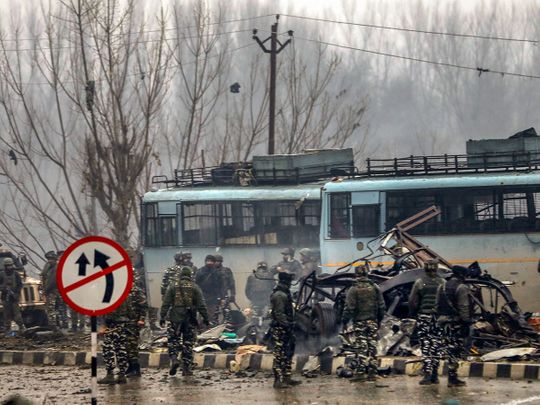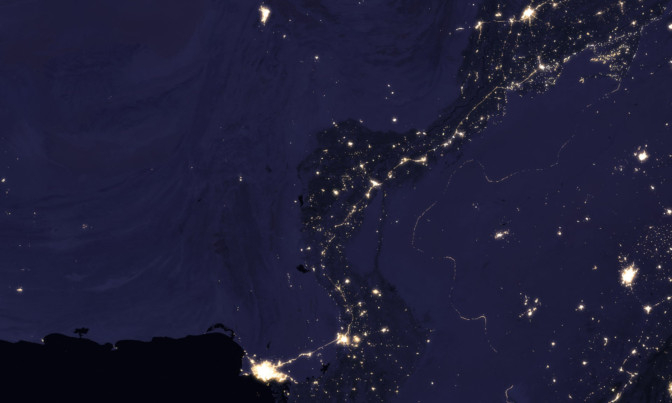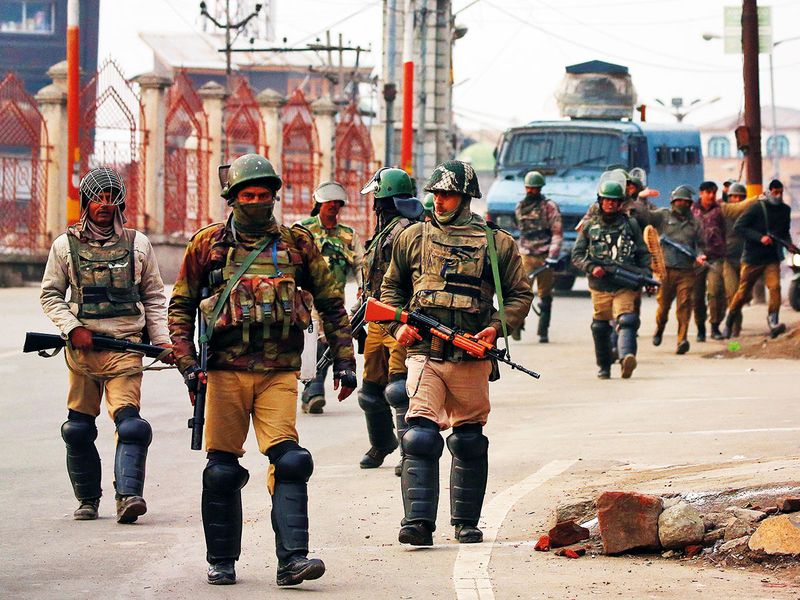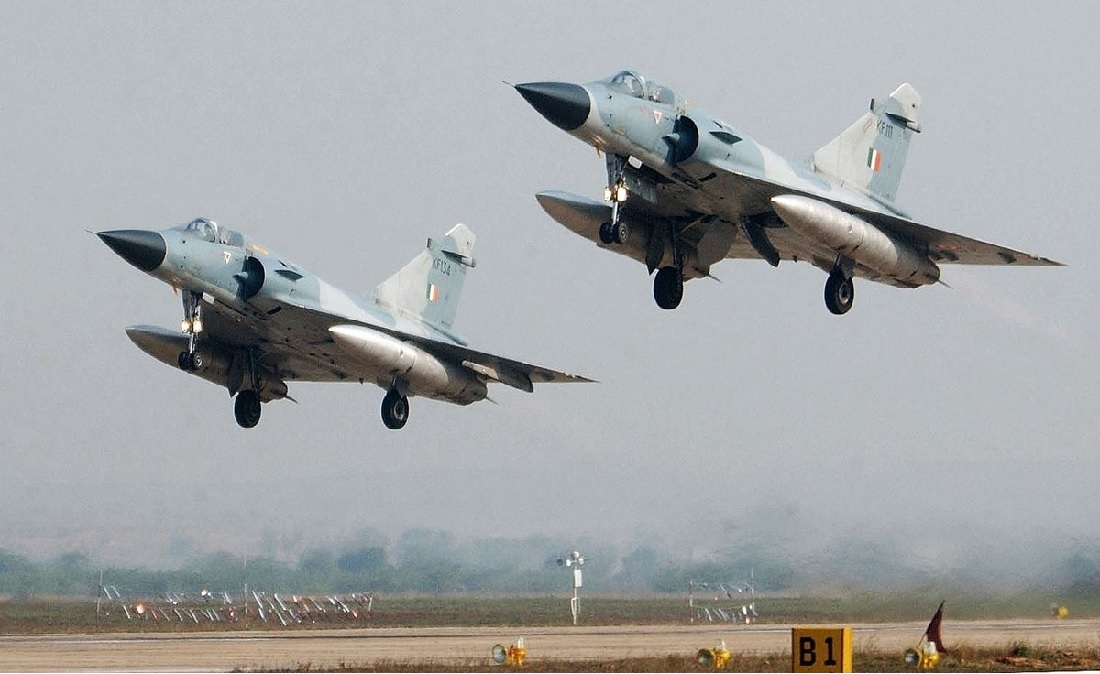
India and Pakistan have fought two wars and countless skirmishes over Kashmir, the Himalayan region claimed in full by both nuclear-armed rivals.
But rarely have ground troops or air forces crossed the heavily-militarised de facto border, known as the Line of Control (LoC), in Kashmir, between the two foes.
Here are some of the major clashes between the South Asian powers over the flashpoint mountainous territory.
Before Pulwama
1947: The first war breaks out over Kashmir after the British exit, which led to the "partition" of the subcontinent, dividing it into India and Pakistan. The maharaja (ruler) of Kashmir accedes to India as tribal fighters from Pakistan launch attacks.
1949: A mutually-agreed ceasefire line was drawn in order to resolve the dispute bewteen India and Pakistan over Kashmir.
1965: India and Pakistan fight a second brief war over Kashmir before a ceasefire is declared.
1971: India and Pakistan fight another war — not over Kashmir — but over Islamabad's rule in then-East Pakistan, with New Delhi supporting Bengali nationalists seeking independence for what would become Bangladesh. India's air force conducts bombing raids inside Pakistan.
1972: After the Simla Agreement, India and Pakistan agree to have a “Line of Control” (LoC).
1984: Indian forces seize the Siachen Glacier, a remote and uninhabited territory high in the Karakoram Range, also claimed by Pakistan. The first of many battles are fought over the high-altitude stretch, until a ceasefire is signed in 2003.
1999: Pakistan-backed militants cross the disputed Kashmir border, seizing Indian military posts in the icy heights of the Kargil mountains. Indian troops push the intruders back, ending the 10-week Kargil conflict which costs 1,000 lives on both sides.
2016: India launches what it calls "surgical strikes" on targets in Pakistani Kashmir in September, less than two weeks after a militant attack on an Indian army base leaves 19 soldiers dead. Pakistan denies the strikes took place.
November 2016: seven Indian soldiers are killed after militants disguised as policemen storm a major army base near the frontier with Pakistan.
After Pulwama
February 14, 2019 (Thursday)
A suicide bomber crashes a car packed with 300kg of explosives into a convoy of Central Reserve Police Forces (CRPF), killing more than 40 Indian paramilitary personnel, and injuring at least 70. The terror attack took place in Pulwama, about 20km from Srinagar, capital of Jammu and Kashmir territory it controls. India vows retaliation.
February 15 (Friday)
- Jaish-e-Mohammad (JeM), whose stated mission is to “free Kashmir from India”, claims responsibility for the bombing. It also released a video in which the bomber, Adil Ahmad Dar, a 20-year-old school dropout, in full battle gear and posing behind a row of scary looking guns, said he hoped to reach heaven by means of his attack on the Indian convoy.
- Some patriotic Indian TV anchors rant with calls to ‘decimate Pakistan.
- Pakistan PM Imran Khan’s Foreign Minister, Shah Mehmood Qureshi, in Munich to attend a security conference, send video message saying he was saddened by India’s ‘knee-jerk reaction’ levelling allegations without sharing any proof or evidence against Pakistan.
February 16 (Saturday)
- India weighs options after Kashmir attack: Diplomatic isolation and military strikes discussed amid domestic pressure to respond in kind to Pulwama terror attack.
- India withdraws most-favoured nation (MFN) status to Pakistan after the Pulwama incident. India hikes the customs duty to 200 per cent on all goods imported from Pakistan, following revocation of the MFN status in the aftermath of the Pulwama terror attack, Finance Minister Arun Jaitely states in a tweet.
- The diplomatic row between the two countries deepens. Foreign ministries of both Pakistan and India summon envoys of the other country and register strong protest. Pakistan Foreign Office cautions Indian government against any ‘misadventure’; urges the Indian side to share evidence of Pakistan’s involvement in the suicide attack.
February 20 (Wednesday)
India suspends key bus service to Muzaffarabad, the capital of the Pakistani territory of Azad Kashmir.
_resources1_16a4a165ed4_original-ratio.jpg)
February 21 (Thursday)
Congress party slams Modi's apathy after Pulwama attack.
February 22 (Friday)
India's Union minister Nitin Gadkari says in New Delhi that India has decided to "stop" the flow of its share of water to Pakistan from rivers under the Indus Waters Treaty (IWT) after the Pulwama terror attack.

Omar Abdullah, former chief minister of Jammu and Kashmir, says Modi is using Pulwama tragedy for political gain.
February 23 (Saturday)
Top separatist leaders arrested during overnight raids as India launches a major crackdown across the restive Kashmir valley, following the Pulwama bombing that left 49 Central Reserve Police Force (CRPF) personnel dead.
February 24 (Sunday)
A senior police officer and a militant killed in a gunfight between security forces and militants in Jammu and Kashmir's Kulgam district, police sources said. Deputy Superintendent of Police Aman Thakur and the militant were killed in Turigam village in fighting that also injured an Army Major.

February 25 (Monday):
- India’s National Intelligency Agency (NIA) identifies vehicle used in carrying out the attack in Pulwama. “The owner of the vehicle is identified as Sajjad Bhat, who has joined Jaish-e-Mohammed terror outfit”, NIA spokesman says.
- The Indian and Pakistani armies trade fire at the Line of Control (LoC) in Jammu and Kashmir's Rajouri district. Indian Defence ministry spokesman Lieutenant Colonel Devender Anand said, "At about 6.30 pm today (Monday), Pakistan army initiated unprovoked ceasefire violation by firing small arms along the LoC in Nowshera sector of Rajouri district."
February 26 (Tuesday)
- 12 Indian Air Force Mirage 2000 jets drop 1,000 kg bombs in what it calls a 'preemptive strike' on suspected Jaish-e-Mohammed camps across the Line of Control (LoC) in Muzafarabad sector at 3.30am. Pakistan army spokesperson Major General Asif Ghafoor confirms that the Indian Air Force (IAF) violated the Line of Control (LoC).
- 6 bombs were dropped on terrorist camps by the Indian Air Force Mirage 2000s: Government sources told ANI
- It was the first such aircraft movement across the Line of Control between India and Pakistan, and carried out attacks for the first time since 1971 in the latest development since deadly Pulwama suicide attack in which
- Key JeM terrorists targeted in the air strikes: Mufti Azhar Khan Kashmiri, head of Kashmir operations; and Ibrahim Azhar, the elder brother of Masood Azhar who was also involved in the IC-814 hijacking, reported ANI.
- Tensions grow along the India-Pakistan border as India calls all-party meeting to brief opposition leaders about the IAF attack
- Pakistan says India has committed 'uncalled-for aggression' by violating the Line of Control (LoC); Pakistan's Foreign Minister Shah Mahmood Qureshi says Pakistan reserves right to give 'suitable response in self-defence'.
- Pakistan Foreign Minister Shah Mahmood Qureshi: Pakistan will take international media to the area of strikes, helicopters are being readied, right now weather is bad, will fly when weather permits.

February 27:
- Pakistani jets have violated Indian airspace and dropped bombs. The jets entered border areas of Nowshera sector in J&K’s Rajouri district, reports said. Pakistan Air Force jets violated Indian airspace in Rajouri sector, dropped bombs near Indian army force.
- An Indian military aircraft has crashed in Jammu & Kashmir's Budgam.
- Pakistan Air Force's F-16 that violated Indian air space shot down in Indian retaliatory fire 3km within Pakistan territory in Lam valley, Nowshera sector.
- Pakistan claims it has shot down 2 Indian Air Force jets, according to a BBC report.
With inputs from AFP
LAC vs LOC: What's the difference?
Kashmir has been divided between the arch-rivals since the end of British colonial rule in 1947. Both claim the former Himalayan kingdom in full. The conflict between India and Pakistan over Kashmir has led to tens of thousands of civilian deaths.
Scores of Kashmir-based groups are fighting for independence or a merger with Pakistan. New Delhi accuses Islamabad of fueling the insurgency. Pakistan denies India’s charge, saying it only provides diplomatic support to Kashmiris' right to self-determination.
The Kashmir issue remains a sensitive one and had been the cause of conflict between the south Asian neighbours.
What is LOC?
Line of Control (LoC) is the de facto, or effective border between India- and Pakistan-controlled parts of Kashmir.
LOC details:
Border: It is a cease-fire boundary that divides Kashmir between the two south Asian nations.
Length: 776 km
Path: Pakistan calls its part Azad Jammu and Kashmir and the Northern Areas (administered by Pakistan); India calls its part Jammu & Kashmir, including Ladakh and the Kashmir Valley (administered by India).
Appearance: It is a line on the map which has recorded multiple skirmishes and open conflict between the two sides. It is clearly demarcated by the militaries.
What is LAC?
The Line of Actual Control (LAC) defines the boundary separating parts of Kashmir controlled by India and Pakistan, as well as the boundary between India and China.
LAC is the effective military border which separates Indian-controlled areas of Jammu and Kashmir from Aksai Chin. It is the effective border between China and India. The term LAC got legally recognized during Sino-Indian agreements which were signed in 1993 and 1996. Just like the LOC, LAC has been a sensitive issue.
In 1962, a brief war had killed more than 2,000 people. This war has resulted from the Himalayan border dispute.
LAC details:
Border: Effective border between India-controlled and China-controlled territory.
Length: 4,057km
Path: It traverses three areas of northern Indian states: western (Ladakh, Kashmir), middle (Uttarakhand, Himachal Pradesh) and eastern (Sikkim, Arunachal Pradesh)
Appearance: Not demarcated. It comprises of big empty regions and nearly 50- to 100-km distance is maintained between the two armies.












